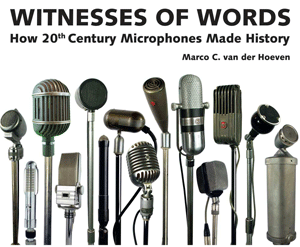|
The Shure PE 47 is a lesser known Shure microphone, which definitely deserves attention, you can read why here.
It came out in 1982, as part of the Professional Entertainer series, and had a strong metal grille and built-in equalizer, which could smooth out lows and boost highs.
In contrast to the well-known SM 57, the PE 47 had a voice-coil with aluminium windings (instead of copper) and the design was transformerless and therefore cheaper to make.
Aluminum was lighter and had a higher resistance than copper, so the cartridge had practically the same impedance (150 Ohm) and output as the SM 57, but could respond faster due to its lower weight, thus perfect for percussive sounds.
The frequency response on the right shows that the sound reproduction of the PE 47 is almost the same as that of the SM 57, and when EQ is used, the treble reproduction is even better; perfect for the snare drum.
Although the SM 57 may be the most used microphone to capture a snare drum, to the chagrin of many, the plastic head can be knocked off the microphone with one firm hit. The result is a damaged capsule, a broken plastic head and an often untraceable copper spring that is supposed to hold the head in place.
The repair takes a lot of time and how good the microphone still sounds afterwards is a relevant question.
Shure itself released a successor to the 545 (predecessor of the original SM 57) in 1968, with a new unidyne IV capsule and a sturdy metal head: the 548. Unfortunately, this new top model vocal and instument microphone never really caught on and production was ended in the early 1980s.
Around that time, Shure introduced the PE 47 as a vocal and instrument microphone. At the time it was mid price, but nowadays this is the only one from the PE series that remains of interest and even has increased in value.
In the 1980s, Shure made more transformerless designs (including the entire PE series), which was interesting in terms of both cost and ergonomics; the microphones could also become lighter and smaller. Examples were the SM 77 and SM 78, which also sound excellent, and the first Beta 57 and Beta 58, which were also designed that way, but the later versions Beta 57A and Beta 58A once more were fitted with a transformer and a capsule with copper windings.
Many modifications for the SM 57 can also be found on the internet, where the transformer is removed to create a more 'open' sound, although there is a considerable output loss of about 15dB.
Shure itself is not enthusiastic about these mods, even more so because removing the transformer changes the internal volume of the microphone, which results in bass loss and it affects the internal shock absorption. If you want to mod your 57, it is best to bypass that transformer, but not remove it, or perhaps look for a PE 47.
Many more types feature in my book Witnesses of Words. More information about that can be found at www.witnessesofwords.com

|
|
|
|
|
Top: both sides of the PE 47
Below: sound, EQ switches, Frequency comparison & info sheet from 1982
|
|
|
|
|
|